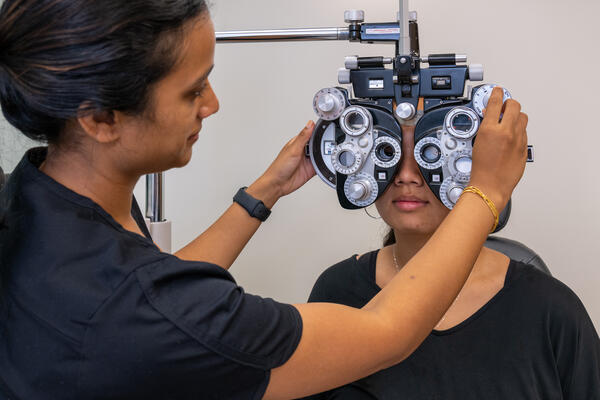The Benefits And Drawbacks of Different Refractive Surgical Procedures for Improved Eyecare

LASIK Surgery
LASIK surgical procedure is a commonly carried out refractive treatment that intends to fix vision issues such as astigmatism, nearsightedness, and farsightedness. During the procedure, a thin flap is created on the cornea, and a laser is used to improve the underlying cells, remedying the refractive error.
One of the main advantages of LASIK surgical procedure is the quick improvement in vision experienced by numerous patients. Most individuals discover a substantial enhancement in their sight shortly after the treatment, with very little downtime required for recuperation. Additionally, LASIK is recognized for its high success price and reduced incidence of complications when performed by experienced surgeons. Like any kind of surgical treatment, LASIK likewise lugs some dangers, consisting of dry eyes, glow, halos, and under or overcorrection of vision. It is necessary for individuals considering LASIK surgical treatment to undergo a detailed examination by an eye care specialist to identify if they are ideal prospects for the procedure.
PRK Procedure
The PRK procedure, additionally understood as Photorefractive Keratectomy, is a sort of refractive surgical treatment that aims to correct vision issues similar to LASIK surgical procedure. Unlike LASIK, which entails developing a flap in the cornea, PRK services the surface area layer of the cornea. During the PRK procedure, the outer layer of the cornea, called the epithelium, is gotten rid of to allow reshaping of the underlying corneal cells with an excimer laser. This improving aids to deal with refractive mistakes such as nearsightedness, astigmatism, and farsightedness.
One of the advantages of PRK over LASIK is that it eliminates the danger of flap-related issues because no flap is created during the surgery. In spite of the longer recovery duration, PRK can be an appropriate option for people seeking vision improvement surgical procedure.
SMILE Surgical Treatment
An advanced refractive surgery strategy acquiring appeal in the area of ophthalmology is SMILE Surgery. Tiny Laceration Lenticule Extraction (SMILE) is a minimally intrusive procedure that remedies vision by improving the cornea utilizing a femtosecond laser. Unlike standard LASIK surgery, SMILE Surgical procedure includes producing a little laceration in the cornea to draw out a lenticule, which results in much less disruption to the corneal framework and possibly quicker recovery times.
Among the primary advantages of SMILE Surgical procedure is its capability to treat myopia (nearsightedness) and astigmatism with high accuracy, bring about outstanding aesthetic end results for patients. The minimally invasive nature of the treatment also decreases the danger of difficulties such as dry eye disorder, making it a favorable choice for individuals seeking refractive surgical procedure.

LASEK Technique
Having actually checked out the advantages and factors to consider of SMILE Surgery, an additional noteworthy refractive surgical treatment strategy worth examining is the LASEK Strategy. LASEK, which means Laser-Assisted Subepithelial Keratectomy, is a form of laser eye surgical treatment that aims to remedy refractive mistakes such as myopia (nearsightedness), hyperopia (farsightedness), and astigmatism.
Unlike LASIK, LASEK does not entail producing a corneal flap. Rather, throughout a LASEK treatment, the doctor utilizes a diluted alcohol service to loosen the thin external layer of the cornea, recognized as the epithelium.
Among the key advantages of LASEK is that it can be appropriate for people with slim corneas that may not be great prospects for LASIK. Furthermore, LASEK usually causes marginal post-operative discomfort and a quicker healing time compared to PRK. The visual healing procedure with LASEK might be slightly longer than with LASIK.
Implantable Call Lenses
Implantable Get in touch with Lenses provide a long-term vision correction remedy for people looking for an option to conventional contact lenses or glasses. These lenses, additionally recognized as phakic intraocular lenses, are operatively placed into the eye to deal with refractive mistakes such as myopia (nearsightedness), hyperopia Recommended Site (farsightedness), and astigmatism. cardiologist andalusia. Unlike standard contact lenses that rest on the surface area of the eye, implantable contact lenses function within the eye itself, providing clear vision without the requirement for daily upkeep or elimination
Among the key benefits of implantable get in touch with lenses is their permanence. When put, they can stay in the eye indefinitely, offering regular and stable vision correction. Additionally, these lenses can be an exceptional choice for individuals that are bad candidates for laser eye surgery or that favor a relatively easy to fix vision adjustment treatment.
Nonetheless, implantable contact lenses do bring some risks, consisting of the capacity for cataracts or raised eye pressure. It is essential for individuals considering this option to seek advice from an eye treatment professional to figure out if implantable contact lenses are the ideal option for their details requirements and eye health.
Verdict
In conclusion, each kind of refractive surgical treatment has its own benefits and drawbacks. LASIK surgery is preferred for its quick recuperation time, while PRK treatment may be appropriate for clients with slim corneas.

In General, SMILE Surgery offers an appealing option for people looking look at this site to boost their vision through refractive surgical treatment.
Comments on “Andalusia Pediatrics: Compassionate Look After Your Children”